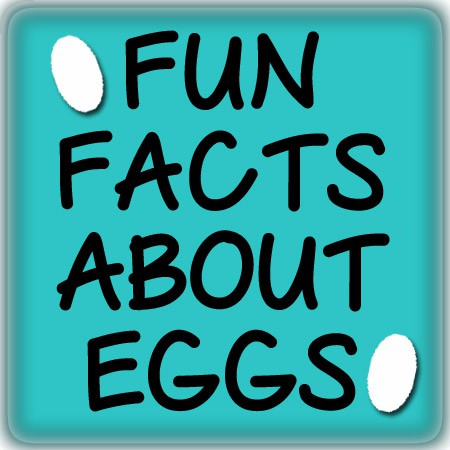The next section in Martha Stewart’s Cooking School Cookbook is Eggs! Since we will be talking about them for a while we decided to share some interesting facts we have learned about eggs.
- Eggs are the most versatile protein because it can be the basis for so many dishes.
- Eggs should be cooked on low to medium heat.
- Eggs are comprised of the yolk (yellow part) and albumen (white part).
- Yolk = most fat and most flavor
- Egg whites whip up to many times its volume.
- Fresh egg = plump firm yolk, white will be thick
- Fresh egg is better for frying.
- Older egg is better for hard-cooking because it is easier to peel.
- Martha says eggs will keep for 4-5 weeks after the date on the carton!
- A large egg is the size called for in recipes.
Eggs are the most popular cooking ingredient in our home. All my Little Chefs want to be the one to crack the egg. I’m not sure why the most delicate item is so loved but we have found some tips that work for us.
- Hit the egg on the counter, no the edge of the bowl.
- Crack the egg in a separate bowl ALWAYS! So many times we have fished out a piece of shell. It is easier to find in it’s own bowl.
- Immediately after all eggs are cracked put your hands up, don’t touch anything and wash thoroughly with soap.
Fun facts from Fannie Farmer about Eggs.
- Composition: Protein 14.9%, Fat 10.6%, Mineral matter 1%, Water 73,5%
- “Eggs, like milk, form a typical food, inasmuch as they contain all the elements, in the right proportion necessary for the body.”
- “A pound of eggs (nine) is equivalent in nutritive value to a pound of beef. From this it may be seen that eggs, at ever twenty-five vents per dozen, should not be freely used by the strict economist. Eggs being rich in protein, serve as a valuable substitute for meat.”
- “It is surprising how many intelligent women, who look well to the affairs of the kitchen, are satisfied to use what are termed “cooking eggs;” this shows poor judgment from an economical standpoint. Strictly fresh eggs should always be used, if obtainable. An egg after the first twenty-four hours steadily deteriorates. If exposed to air, owing to the porous structure of the shell, there is an evaporation of water, air rushes in, and decomposition takes place.”
- “White of egg contains albumen in its purest form. Albumen coagulates at a temperature of from 134 degrees to 160 degrees F. Herein lies the importance of cooking eggs at a low temperature, thus rendering them easy of digestion. Eggs cooked in boiling water are tough and horny, difficult to digestion, and should never be served. When eggs from from the market, they should be washed, and put away in a cold place.”
- Fannie Farmer had 28 recipes for the use of eggs.
Fannie Farmer’s Ways of Determining Freshness of Eggs
- Hold in front of candle flame in dark room, and the center should look clear.
- Place in basin of cold water, and they should sink.
- Place large end to the cheek, and a warmth should be felt.
Fannie Farmer’s Ways of Keeping Eggs.
- Pack in sawdust, small end down.
- Keep in lime water. According to Fannie Farmer, eggs are preserved by exclusion of air in lime water.
- From July to September a large number of eggs are packed, small ends down, in cases having compartments, one for each egg, and kept in cold storage. Eggs are often kept in cold storage six months, and then sold as cooking eggs.
Two recipes from A Thousand Ways to Please a Husband with Bettina’s Best Recipes, Weaver and LeCron, Dover Publications, 2012.
Devilled Eggs (Six eggs)
6 hard-cooked eggs
1 t-melted butter
1 t-vinegar
1/4 t-chopped parsley
1/4 t-mustard
1/4 t-salt
Shell the eggs, cut lengthwise in half, remove yolks, mash them and add vinegar, mustard, melted butter, parsley and salt. Refill the whites and put pairs together. Wrap in tissue paper with frilled edges to represent torpedoes.
Baked Eggs (Two portions)
2 eggs
1 T-butter
1/2 C-milk
1/4 t-salt
2 T-soft bread crumbs
1/8 t-paprika
Butter two individual moulds, and break an egg into each. Mix the salt and pepper in the milk, and pour half of the mixture over each egg. Melt the butter, and add the crumbs. Place the buttered crumbs on top of each egg. Bake in a moderate oven twenty minutes. Serve in the moulds.





2 Replies to "Fun Facts About Eggs"
Alicia March 16, 2014 (6:07 am)
Oooh baked eggs sounds nice. Lots of eggcellent(sorry had to say it) info 🙂
Ruth Corthell March 27, 2014 (8:27 am)
Loved reading the difference in opinions of two well-known chefs! Thanks for a great post. 🙂